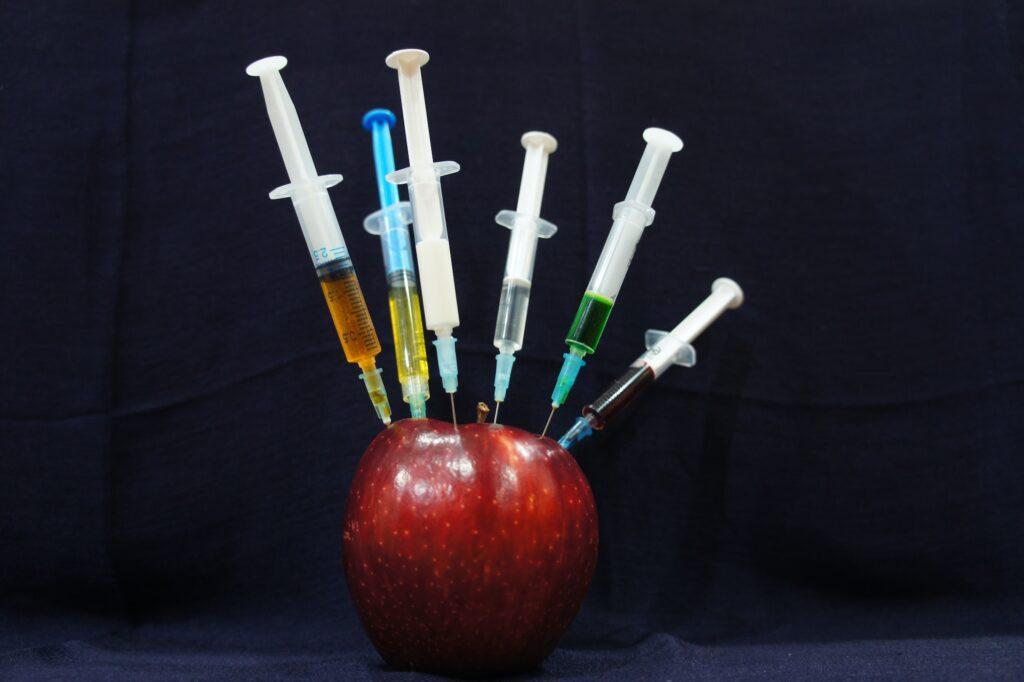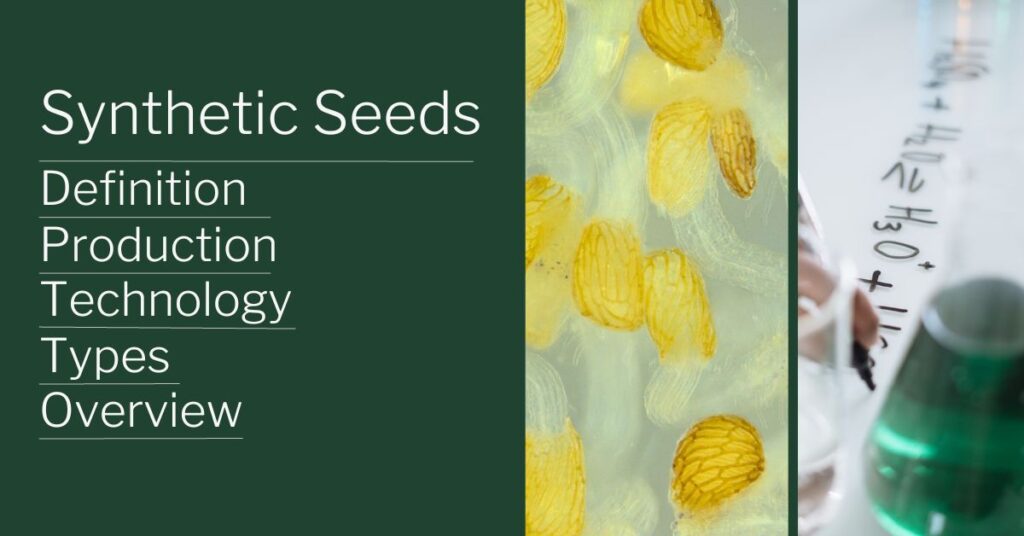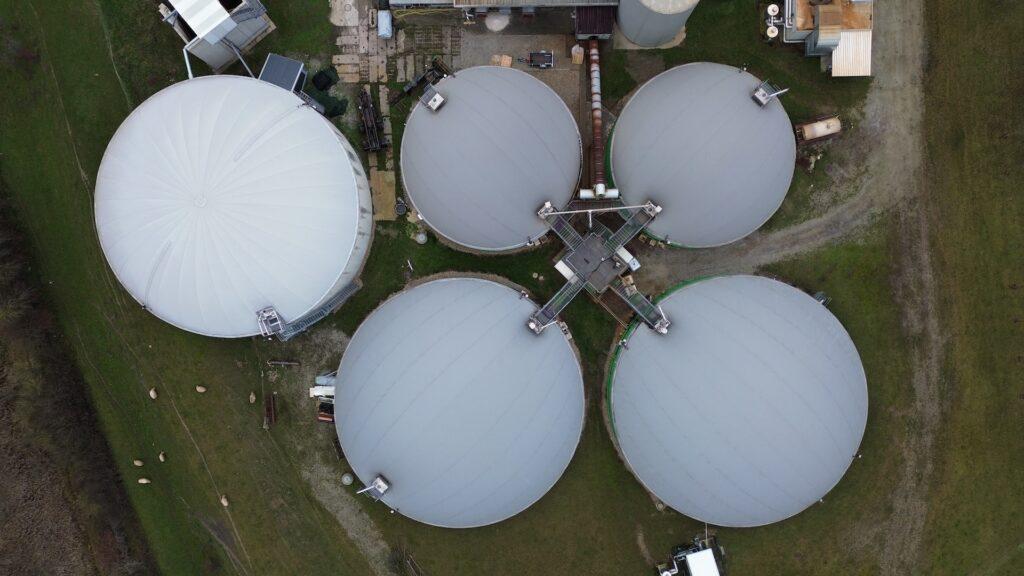We all have heard a lot about genetically modified Mustard, Bt Cotton and know how famous Golden Rice is. But how did these crops come into existence and how was it created ? The answer to that is Genetic Modification. It is also known as Genetic Engineering is the process of adding or removing a certain part of the DNA of an organism.

Genetically modified crops can be produced by alteration in the genetic pattern, of an organism to get a different organism with different characteristics. Whereas transgenic is about transferring the gene from one species to another species.
Genetically modified crops examples
Genetically modified crops are developed with different objectives like making them pest resistant, herbicide tolerant, biofortify, drought resistant, salt resistant, water resistant, increasing their shelf life and even the medicinal substance can be obtained from GM crops through pharming.
Some famous types of Genetically modified crops examples are :
- BT Cotton
- GM Mustard
- Golden Rice
Bt Cotton
Bt Cotton is the only type of gm crops (genetically modified) allowed for cultivation in India, here Bt cotton full form is Bacillus thuringiensis, it is a naturally occurring soil-borne bacteria that causes insect illness. It produces a toxic substance called crystal protein which kills the pest after ingestion. From this bacteria a gene Cry1Ac was transferred into cotton consequently that cotton plant also started producing the same toxin that’s why bt cotton is resistant to pest.

Bt cotton was introduced by a joint venture of Monsanto and Mahyco (Maharashtra Hybrid Seed Company). There are 3 varieties of Bt cotton sold under the name :
- Bollgard-I : It has only one gene transferred from the bacteria Bt.
- In 2006 Bollgard-II was permitted and it has 2 genes from the same bacteria.
- Monsanto has also developed Bollgard-III, it is not only pest resistant but also herbicide tolerant having 3 genes from the same bacteria. The herbicide resistant against Glyphosate. It is also known as round up ready. Therefore Bollgard-III is also known as RRF( Round up Ready Flex) . India has not permitted the cultivation of Bollgard III.
Bt cotton is resistant against to 3 types of Bollworm as claimed by Monsanto i.e.
- American Bollworm
- Pink Bollworm
- Spotted Bollworm
Bt Cotton Uses
- One of the advantages of Bt Cotton is that it controls pests by releasing toxin crystal protein which kills Budworms, Flies, Mosquitoes, and other insects. Less number of insecticides has to be sprayed in the soil.
- Bt cotton helps in effective yield which provides benefits to the farmers in terms of higher profits.
- Bt cotton also helps in reducing soil pollution due to less use of pesticides.
India became the second largest producer of cotton in the world in 2012. But also at the same time a Parliamentary committee recommended that its cultivation should be stopped. It was followed by a PIL in SC. This led to the appointment of a 6 membered technical experts committee.
It has made following recommendations:
- India should not permit edible genetically modified Crops for the next 10 years, the global standard for the edible crops is that only processed GM crops are allowed for human consumption, in 2006 a law was passed in the form of Food safety standards act which mandated that only processed GM foods are allowed for human consumption.
- In 2012 the ministry of consumer affairs issued a notification which mandated mandatory GMO labeling for the edible GM products. The notification was issued under consumer protection act in the form of Legal Metrology (packed commodities) rules.
- In 2018 it issued another notification which restricted GM labeling only for those products where GM component is more than 5%, there is debate on whether labeling should be mandatory or voluntary. The labeled products will be costly if it is mandatory, which will hurt their commercial viability. If it is made voluntary then it might result in health related complications. In India the agriculture sector and food packaging sector are decentralized and unorganized. Therefore it will be more difficult to ensure that these norms are being fulfilled.
- The SC appointed technical experts committee which recommended that herbicide tolerant varieties should not be allowed for cultivation as it might result in the emergence of super weeds.
- Indian originated crop’s GM variety should not be allowed. It might affect the crop diversity.
- In 2018 Mr. Swaminathan along with Mr. Kesvan wrote an article which suggested that Bt Cotton has failed to provide supportable livelihood to the farmers, such crops should be used in only 1% of the cases and that to against abiotic factors.
A Parliamentary committee recommended a ban due to the following reasons : Biosafety and Pest Resistance.
- 2016- 75% of Bt cotton destroyed by Whitefly in Punjab. Highlighting pest resistance.
- 2017- Many farmers died spraying pesticides in agricultural fields in Yavatmal district in Maharashtra.
- There has been a decline of 11% in productivity in GM cotton in recent times. Centre for Science and Environment carried out a survey where 30% of food products have GM components despite the government not giving permission for the same.
What should be done?
- A neutral committee should be constituted to study scientifically the costs and benefits of GM Crops.
- There is also a need to have a regulatory framework for GM Crops. There should be an independent regulatory body for this purpose.
- Members should have no conflict of interest.
- FSSAI should come out with guidelines for edible GM products. Bt Brinjal- Not given permission in 2010
Genetically Modified Mustard
GM Mustard is a types of gm crops, gm mustard developed by a team led by former Vice Chancellor of Delhi University Mr Deepak Pental, the name is GM mustard dmh 11. The objective was to increase productivity by developing hybrid seeds through cross pollination.

They took 2 varieties of mustard i.e. Varuna and Early Heera, in Varuna Barnase gene was transferred from the bacteria Streptomyces Amylolquifaciens. This gene hinders the pollen formation to render Varuna male sterile. Bar gene was transferred from the bacteria Streptomyces hygroscopic in the same plant. It provides protection against the herbicide glufosinate. Early Heera Barstar gene was inserted from the bacteria Streptomyces Amylolcufaciens whose role is to reverse the impact of Barnase in the next generation.
Early Heera will undergo self pollination whereas Varuna will undergo cross pollination, Glufosinate will spread to kill Early Heera after the completion of pollination. The seeds collected from Varuna are Hybrid. They will be sold to the farmers. The flowers produced from these seeds will undergo self pollination as Barstar has neutralized the impact of Barnase.
Genetically Modified Mustard Uses
- GM Mustard helps in the hybridization and production of high yielding commercial Mustard crops.
- It is herbicide resistant, GM Mustard prevents from getting sprayed by dangerous chemicals that may cause health issues to people.
- It has been observed that DHM-11 (GM Mustard) has increased yield per hectare by 25–30% in comparison to the conventional types.
Issues with gm mustard dmh 11
- GM Mustard is an edible GM crop.
- Genetically Modified Mustard is herbicide tolerant.
- Bar, Barnase, Barstar are under the patent of Bayer. A question is under what conditions this German company has permitted the use of the patented genes ? Bayer has the right for the genes and the right for Glufosinate. But only this chemical can be used as a herbicide in case of GM Mustard.
- The Biosafety report of GM mustard explained the safety aspects of the genes in detail but it did not mention Glufosinate.
- But some of the critics while criticizing GM mustard have gone a bit too far by alleging that there is use of terminator technology which is false as it is universally banned. Moreover, there has been an additional ban in India since 2002.
- The argument that India has been importing edible oils from Canada for more than 2 decades and 100% of oil crops in Canada are transgenic and there is no scientific evidence to suggest adverse health impact has been given by Mr. Pental and his team.
- They also cited the findings of more than 100 studies sponsored by the European Union related to edible genetically modified crops where no one has been able to prove the health hazards from the consumption.
Challenges with edible Genetically Modified food crops
- There is lack of adequate food testing infrastructure.
- Highly decentralized and unorganized food sector in India.
- Threat to biodiversity.
- Lack of clarity on health impacts on consumption of genetically modified crops.
- Processing, testing and labeling requirements will make them expensive.
- Imported GM foods are entering India without permission.
- Developed countries like France have banned edible GM crops (only 24 countries have permitted edible GM crops).
Golden Rice
- The International Rice Research Institute (IRRI) and its partners which are the Philippines Rice Research Institute and the Bangladesh Rice Research Institute, have successfully cultivated Golden Rice in a controlled environment on IRRI campus.
- Golden rice is just as wholesome and nutritious as regular rice, with the extra benefit of having more beta-carotene than regular rice according to the safety assessments.
- The goal is to provide for the large rice-eating population who suffer from a high prevalence of deficiencies.
- A new kind of rice known as “Golden Rice” contains beta-carotene (provitamin A), which the body converts into vitamin A as needed and gives the grain its golden shade.
- It is created using genetic engineering and generates two new enzymes that finish the expression of beta-carotene in the rice grain.
- One cup of Golden Rice can provide up to 50% of the daily requirement of an adult for vitamin A as indicated by a research.
- However, it currently has a short shelf life of no longer than 3 months because beyond that it might lose its nutrients.
- Rice varieties with the GR2E Golden Rice trait have the same yield and agricultural performance as their standard equivalent and can be grown in the same manner as regular rice.
- Golden rice is intended to offer up to 30 to 50 percent of the estimated average demand for vitamin A for preschool-aged children and pregnant or nursing women and it is meant to complement current tactics in the battle against vitamin A deficiency (VAD).
Vitamin A Deficiency (VAD)
- Optimal vision, skin, bone, and other bodily tissues depend on the fat-soluble vitamin A.
- There are two varieties of vitamin A :
- Animal products include retinol, or preformed vitamin A. Fortified milk, eggs, beef, cheese, liver, halibut fish oil, cream, and kidneys are excellent sources.
- Plant-based foods including fruits and vegetables contain pro-vitamin A. The carotenoid beta-carotene, which is responsible for the dark shade in plant foods, is the most prevalent form of pro-vitamin A.
- There are approximately 250 million cases of vitamin A deficiency (VAD) worldwide.
- The major cause of childhood blindness and immune system dysfunction, women and children are particularly at risk when it comes to VAD.
- A variety of strategies are required to address VAD, including food fortification, vitamin A supplementation, breastfeeding promotion, supporting a diversified and nutrient-rich diet, nutrition education, and other public health initiatives aiming at the prevention of infectious diseases.
Conclusion
Genetically Modified Crops are more healthy and nutritious crops having characteristics such as pest resistant. Bt Cotton controls pests by releasing toxin crystal protein which kills insects, Genetically Modified Mustard helps in producing high yielding mustard crops. But Indian Parliamentary committee issued a ban on GM crops due to various reasons such as death of farmers due to use of pesticides. For which various steps are advised to be taken like committee, guidelines etc. There are also problems faced by GM crops such as threat to biodiversity, illegal imports of GM foods etc.
FAQs
What is GM crops examples?
A few GM crops examples are Bt Cotton, GM Mustard and Golden Rice.
What do you mean by GM crops?
Genetic modification is adding or removing a certain part of the DNA where as transgenic is about transferring the gene from one species to another species.
Which is the first GM crop in India?
BT cotton is the first genetically modified plant commercially released in India.




